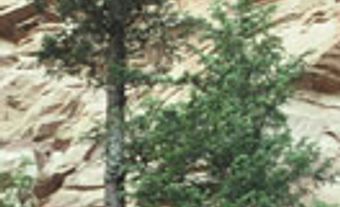Pine
The pines (genus Pinus) are evergreen conifers for which the Pinaceae family is named. The 80-90 species occur in the Northern Hemisphere with 9 in Canada. Most pines are trees but some are shrubs. Long, needlelike leaves are found in clusters of 2-5 (rarely one) on dwarf shoots. Seed cones are woody, often with sharp spines on scales. Each scale bears 2, usually winged, seeds, maturing the year after pollination.
Most are either "soft" pines with 5 needles per shoot or "hard" pines with 2-3 per shoot. The most familiar soft pines are western white pine (P. monticola) of BC, and eastern white pine (P. strobus), east of Manitoba. Others include limber pine (P. flexilis) and whitebark pine (P. albicaulis) of the western mountains. Hard pines include ponderosa pine (P. ponderosa) and lodgepole pine (P. contorta) in the West, jack pine (P. banksiana) in the Boreal Forest, red pine (P. resinosa) and pitch pine (P. rigida) in the East.
Eastern white pine provides a very valuable softwood. It was exported from New France as early as 1700, as well as being used in the colony for construction and shipbuilding. As a group, pines are still the most common Canadian conifers and yield lumber, pulp and paper.
See alsoForestry; Timber Trade History.

 Share on Facebook
Share on Facebook Share on X
Share on X Share by Email
Share by Email Share on Google Classroom
Share on Google Classroom



